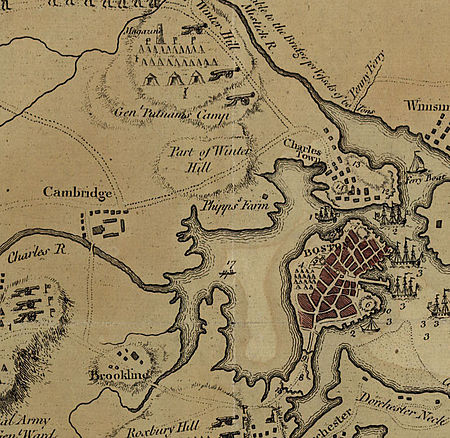Fortification of Dorchester Heights

The Fortification of Dorchester Heights was a decisive action early in the American Revolutionary War that precipitated the end of the siege of Boston and the withdrawal of British troops from that city. On March 4, 1776, troops from the Continental Army under George Washington's command occupied Dorchester Heights, a series of low hills with a commanding view of Boston and its harbor, and mounted powerful cannons there threatening the city and the Navy ships in the harbor. General William Howe, commander of the British forces occupying Boston, planned an attack to dislodge them. However, after a snowstorm prevented its execution, Howe withdrew instead. British forces, accompanied by Loyalists who had fled to the city during the siege, evacuated the city on March 17 and sailed to Halifax, Nova Scotia.
Excerpt from the Wikipedia article Fortification of Dorchester Heights (License: CC BY-SA 3.0, Authors, Images).Fortification of Dorchester Heights
Thomas Park, Boston South Boston
Geographical coordinates (GPS) Address Nearby Places Show on map
Geographical coordinates (GPS)
| Latitude | Longitude |
|---|---|
| N 42.332777777778 ° | E -71.046388888889 ° |
Address
Dorchester Heights National Historic Site
Thomas Park
02127 Boston, South Boston
Massachusetts, United States
Open on Google Maps







